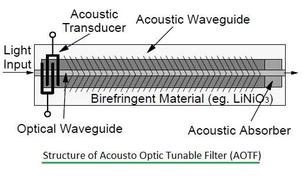Optical Switches: Applications and Requirements
Advertisement
Optical switches are essential components in the optical industry, finding uses in various applications depending on their switching speed and the number of ports they offer. Let’s explore some key applications:
Applications of Optical Switches
Provisioning of Optical Paths
Optical switches are used to reconfigure wavelength cross-connects, enabling support for new light paths. This eliminates the need for manual fiber patch panels, a technique that has been used for years. Implementing this requires sophisticated software. For this application, switches with switching times in the millisecond range are suitable, but a large number of ports (1000+) are preferable.
Protection Switching
In the event of an optical fiber cable failure, optical switches reroute traffic to a secondary fiber cable. The switching time needs to be long enough to detect the fault, notify the network elements, and transfer the entire load to the backup cable (typically milliseconds).
Packet Switched Networks
Packet switching demands very fast switches capable of operating on a packet-by-packet basis. The switching time should be less than the packet duration. For example, at 10 Gbps, Ethernet packets ranging from 60 to 1500 bytes have durations of approximately 48 to 1200 nanoseconds. Hence, for this application, switching times in the nanosecond range are required. These switches generally require fewer ports.
Modulators
Optical switches can also function as external modulators, turning the light on and off based on the laser source. In this context, they need to operate at a fraction of the bit duration, demanding switching times on the order of picoseconds.
Summary of Switching Time and Port Requirements
The following table summarizes the switching time and number of ports required for optical switches in the applications discussed above:
| Application | Switching Time | Number of ports |
|---|---|---|
| Light path provisioning | 1 to 10 ms | greater than 1000 |
| Protection Switching | 1 to 10 ms | 2 to 1000 |
| Packet Switching | 1 ns | greater than 100 |
| External modulation | 10 pico-sec | 1 |
Key Optical Switch Parameters
Several parameters define the performance of an optical switch:
- Number of Ports: Determines the switch’s capacity to connect different optical paths.
- Switching Time: The time it takes to switch from one port to another.
- Insertion Loss: The signal loss introduced by the switch; this should be minimized.
- Extinction Ratio: The ratio of the output power in the “on” state to the output power in the “off” state. A high extinction ratio is desirable.
- Crosstalk: The ratio of the power at the output from the desired input to the sum of the power from all other inputs. Low crosstalk is crucial for signal integrity.
- Low Polarization Dependent Loss (PDL): The variation in insertion loss due to changes in the polarization of the light.
- Reliability: Measured in terms of Mean Time Between Failures (MTBF) or other reliability metrics.
Advertisement
 RF
RF


